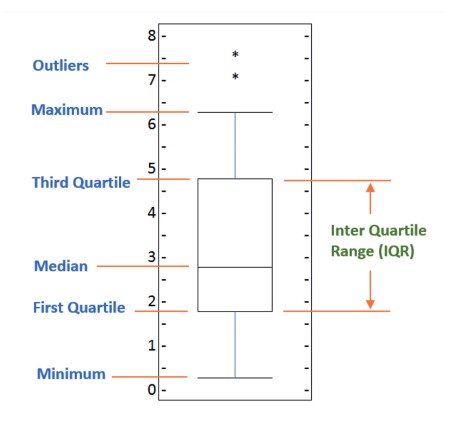Box Plot -- Version 2
What is a Box Plot?
Introduction:
A box plot, also known as a box and whisker plot, is a graphical representation of data that is used to show the distribution of data. The various dimensions of a box plot are the minimum value, first quartile, median, third quartile, and maximum value. This type of plot is very useful for seeing how data is distributed and for finding outliers. In this blog post, we will discuss the importance of box plots in data analysis and how to read them.

How to Read a Box Plot
Dimensions
To understand how to read a box plot, let's first talk about the five dimensions. The minimum value is the lowest value in the data set. The median is the middle value in the data set that divides the data set into two equal parts. The maximum value is the highest value in the data set, not including outliers.
Example
Let's say we have a data set with the following values: 1, 2, 3, 4, 5, 6, 7, 8, 9, 10. The minimum value would be 1, the first quartile would be 3 because it divides the dataset into two equal parts (1-3 and 4-10), the median would be 5 because it's the middle value of our dataset, the third quartile would be 7 because it divides the dataset into two equal parts (1-7 and 8-10), and finally our maximum value would be 10.
Interpret
Once you know how to find these five dimensions, you can begin to read a box plot. A box plot will always have a line in the middle that represents either the median or mean of our data set. On either side of this line will be a box. The bottom of this box will represent either our first or third quartile (depending on which one has the lower value) and the top of this box will represent either our third or first quartile (depending on which one has the higher value). Finally, there will always be two lines extending from either side of our box called whiskers. These whiskers represent our minimum and maximum values respectively.
Now that you know how to read a box plot, let's talk about why they are important in data analysis!
The Importance of Box Plots in Data Analysis
Box plots are very useful for understanding how data is distributed. They can also be used to find outliers (data points that are significantly different from everything else). When you're looking at a large dataset, it can be difficult to see patterns and find outliers just by looking at raw numbers. That's where box plots come in! By visually representing your data, box plots make it much easier to find trends and outliers that you might not otherwise notice.
Conclusion:
In conclusion, box plots are extremely useful tools for understanding how data is distributed and for finding outliers!
Thus, a box plot is a visualization of given data that is used to statistically represent the distribution of the data. The five main dimensions of a box plot are the minimum, first quartile, median, third quartile, and maximum. These dimensions are used to create a "box" around the data that allows for easy visualization of the distribution. Box plots are often used in statistics to give a quick and easy visualization of data sets. They are also often used to compare multiple data sets or to see how different variables affect the distribution of a given data set.
We hope this knowledge post has helped you understand how to read them and why they are important in data analysis!
Thanks for reading!
